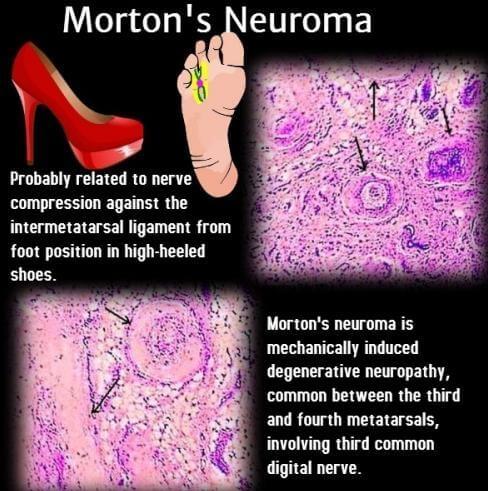|

Custom Search
|
|
Dermpath-India Pathology of Morton's Neuroma (Morton's Metatarsalgia)
|

|
Morton's neuroma is mechanically induced degenerative neuropathy which has a strong predilection for the third common digital nerve in middle-aged women. This non-neoplastic lesion was described by Thomas Morton in 1876. Cause: It commonly occurs in female adults and is probably related to nerve compression against the intermetatarsal ligament from foot position in high-heeled shoes or due to ischaemia. Clinical presentation: Patient complains of severe pain in the sole of the foot, in the region of the metatarsal heads or metatarsophalangeal joints. Site: There is perineural fibrosis of the plantar digital nerve. The nerve is usually affected at the level of the metatarsal head and is common between the third and fourth metatarsals and then between the second and third. Gross: There is thickening or fusiform swelling of the plantar digital nerve at its bifurcation, with thickening of adjacent tendosynovial tissues. Microscopic features: There is prominent endoneurial, perineurial and epineurial fibrosis and hyalinization associated with loss of axons. There is fibrosis and thickening of the blood vessel wall.
|
|
|
Visit:- Infectious Disease Online
Copyright © 2022 histopathology-india.net